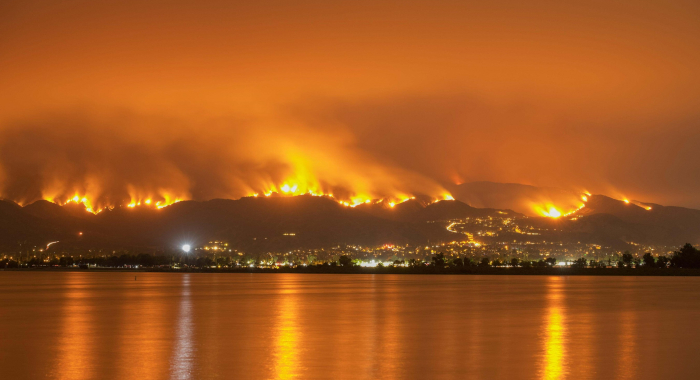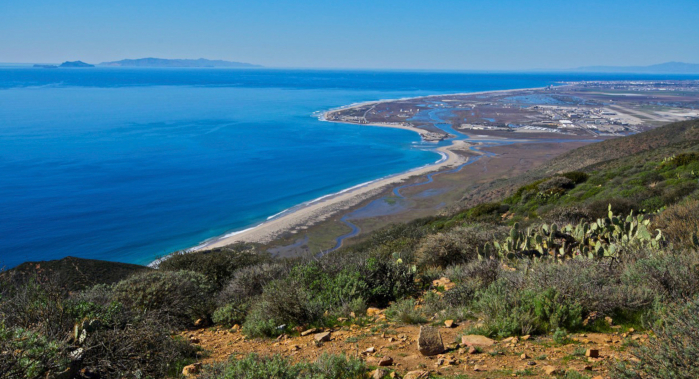Systematic, science-based conservation planning is a hallmark of the Conservancy. For biodiversity to thrive, habitats need to be protected, enhanced, or restored not just in the still wild places on the planet but also where people live and make their livelihoods.
Multi-disciplinary planning can help elucidate where the highest priority places are and what needs to happen there – and inform tradeoffs between conservation and other societal values.


Jeanette Howard, Kirk Klausmeyer, Kurt Fesenmyer
Californians face profound decisions regarding the management of their state’s increasingly limited water supply. Critical for decision-making is information about the plants and animals that…Emily Saarman, Mary Gleason, John Ugoretz, Satie Airamé, Mark Carr, Evan Fox, Adam Frimodig, Tom Mason, Jason Vasques
This paper explores four key conditions that supported the successful integration of science into the Marine Protected Area network planning effort in California. The redesigned statewide network of…Mary Gleason, Evan Fox, Susan Ashcraft, Jason Vasques, Elizabeth Whiteman, Paulo Serpa, Emily Saarman, Meg Caldwell, Adam Frimodig, Melissa Miller-Henson, John Kirlin, Becky Ota, Elizabeth Pope, Mike Weber, Ken Wiseman
This paper reviews the design of a network of marine protected areas (MPAs) in state waters as mandated by the Marine Life Protection Act (MLPA). A public–private partnership (the MLPA…Evan Fox, Melissa Miller-Henson, John Ugoretz, Mike Weber, Mary Gleason, John Kirlin, Meg Caldwell, Sonke Mastrup
In California, after two unsuccessful attempts, statewide planning of a network of marine protected areas (MPA) was achieved through the California Marine Life Protection Act (MLPA) Initiative. This…John Kirlin, Meg Caldwell, Mary Gleason, Mike Weber, John Ugoretz, Evan Fox, Melissa Miller-Henson
This paper reviews how recommendations developed through the Marine Life Protection Act (MLPA) Initiative supported regulatory decisions by the California Fish and Game Commission to greatly expand…Evan Fox, Sean Hastings, Melissa Miller-Henson, Dominique Monie, John Ugoretz, Adam Frimodig, Craig Shuman, Brian Owens, Rebecca Garwood, Darci Connor, Paulo Serpa, Mary Gleason
This paper explores the strategies used to address policy issues that arose in marine protected area (MPA) planning process in California. The authors provide examples from six specific topic…Matthew S. Merrifield, Will McClintock, Chad Burt, Evan Fox, Paulo Serpa, Charles Steinback, Mary Gleason
This paper reviews the creation and use of MarineMap, a spatial decision support system that enabled stakeholder participation in designing marine protected areas (MPAs). The authors highlight why it…Evan Foxa, Eric Poncelet, Darci Connor, Jason Vasques, John Ugoretz, Scott McCreary, Dominique Monié, Michael Harty, Mary Gleason
This paper examines how differences in regional characteristics and lessons learned influenced three important elements of the stakeholder process of California's Marine Life Protected Area (MLPA)…Cameron, D., S. Parker, B. Cohen, J. Randall, B. Christian, J. Moore, L. Crane, S. A. Morrison
Industrial-scale renewable energy generation facilities can have sizable footprints and therefore significant impact on the conservation values of a landscape. This assessment focused on a region…M. Rebecca Shaw, Kirk Klausmeyer, D. Richard Cameron, Jason MacKenzie, Patrick Roehrdanz
Species will move around the landscape as the climate changes, presenting challenges for traditional conservation strategies like land acquisition. This paper models the cost and total land area that…Halpern, B.S., Diamond, J., Gaines, S., Gelcich, S., Gleason, M., Jennings, S., Lester, S., Mace, A., McCook, L., McLeod, K., Napoli, N., Rawson, K., Rice, J., Rosenberg, A., Ruckelshaus, M., Saier, B., Sandifer, P., Sholtz, A., Zivian, A.
This paper informs emerging efforts to implement coastal and marine spatial planning (CMSP) in the United States, Europe and elsewhere around the world. In order to identify priority needs for…Shaw, M.R., L. Pendleton, D.R. Cameron, B. Morris, D. Bachelet, K. Klausmeyer, J. MacKenzie, D.R. Conklin, G.N. Bratman, J. Lenihan, E. Haunreiter, C. Daly, P.R. Roehrdanz
As the climate warms, changes in ecosystems will impact human communities and livelihoods. This paper, together with a California Energy Commission Scenarios Report of the same name, explores the…SA Morrison, KR Faulkner, LA Vermeer, L Lozier, MR Shaw
Eradication programs are complex undertakings that require comprehensive multidisciplinary planning and nimble adaptive implementation. This paper discusses the preparation that went into the most…